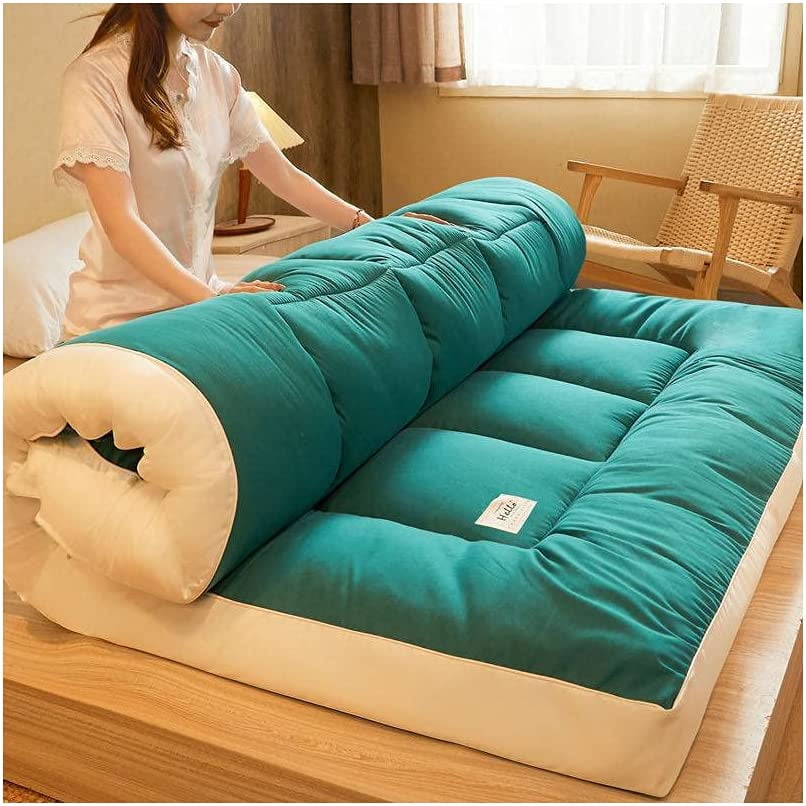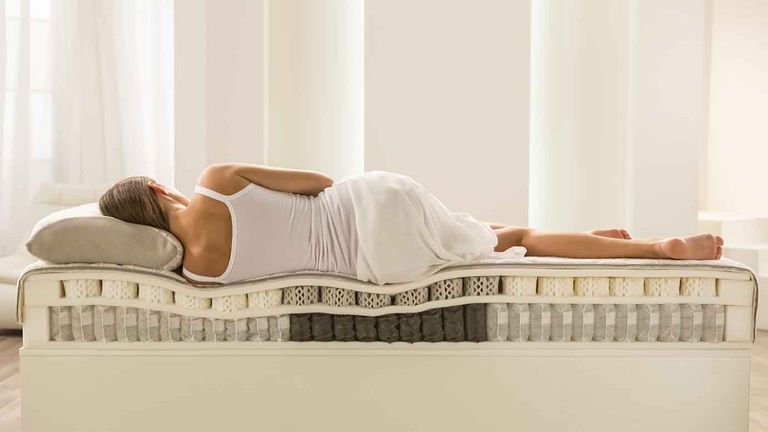Have you ever considered ditching your bed frame and placing your mattress directly on the floor? This unconventional sleeping arrangement has gained traction, with proponents claiming a myriad of benefits, from improved sleep quality to reduced back pain. But is there any scientific evidence to support these claims? This article dives deep into the world of floor-sleeping, exploring the potential benefits, downsides, and everything in between.

Image: www.inf-inet.com
Sleeping on the floor might seem like a strange concept in the modern era, where plush beds and extravagant sleep accessories dominate the market. However, throughout history, sleeping on the floor was a common practice, especially in cultures where resources were scarce. Today, the trend is experiencing a resurgence, with individuals seeking a more natural and minimalist approach to their sleep environment. But is this trend based on mere aesthetics or are there genuine advantages to be gained?
The Allure of Floor Sleeping: Exploring the Potential Benefits
1. Enhanced Spinal Alignment and Reduced Back Pain
One of the most touted benefits of floor sleeping involves spinal alignment. Proponents argue that sleeping on a hard surface forces your spine to maintain a neutral position, reducing strain and eliminating pressure points that can contribute to back pain. While this claim is plausible, scientific evidence is limited. Some studies suggest that a firmer sleeping surface may be beneficial for individuals with lower back pain, but more research is needed to confirm the effectiveness of floor sleeping specifically.
It’s important to note that the relationship between sleeping surface and back pain is complex, influenced by factors like sleeping posture, mattress firmness, and individual anatomy. If you experience persistent back pain, consulting a healthcare professional is crucial to determine the root cause and recommend appropriate treatment.
2. Improved Posture and Core Strength
Another intriguing benefit associated with floor sleeping is its potential to improve posture and core strength. The absence of a bed frame forces your body to engage its core muscles to maintain stability and prevent rolling off the mattress. This constant engagement, according to some proponents, can lead to improved posture and a stronger core over time.
While engaging your core muscles while sleeping might seem like a positive development, studies are inconclusive on whether floor sleeping, compared to traditional bed sleeping, leads to significant improvements in posture or core strength. However, engaging in regular core strengthening exercises and maintaining good posture throughout the day is undoubtedly beneficial for overall health.

Image: www.realhomes.com
3. A More Natural and Minimalist Sleep Environment
For individuals seeking a more minimalist and natural sleep environment, floor sleeping can be a compelling choice. It eliminates the clutter of bulky bed frames and adds a sense of simplicity to the bedroom. The proximity to the ground can also create a grounding effect, promoting a sense of calm and relaxation.
This minimalist approach aligns with the growing trend of decluttering and simplifying one’s life. The absence of a bed frame can also be perceived as an eco-friendly choice, reducing the use of materials and lowering the carbon footprint associated with furniture production.
Navigating the Challenges: Downsides of Floor Sleeping
1. The Potential for Discomfort and Pain
The lack of cushioning provided by a bed frame and a traditional mattress can be a significant drawback for some individuals. Sleeping on a hard surface can lead to discomfort, aches, and pains, particularly for those who are accustomed to softer sleeping surfaces. The lack of support can also exacerbate existing conditions like back pain, arthritis, and hip problems.
2. Allergies and Dust Mites
Floor sleeping can expose you to more allergens and dust mites compared to elevated beds. Since the mattress is closer to the ground, it becomes more susceptible to dust, pet dander, and other allergens that accumulate on floors. This can trigger allergies and respiratory problems, particularly in individuals with sensitivities.
While regular vacuuming and dusting can help mitigate these issues, it’s important to consider your personal allergies and sensitivities before adopting floor sleeping. If you have severe allergies or asthma, it’s advisable to consult with a doctor or allergist to determine if floor sleeping is suitable for you.
3. Sleep Disruptions and Difficulty Getting Up
Floor sleeping can also lead to sleep disruptions due to its unforgiving surface. The lack of cushioning can make it difficult to maintain a comfortable sleeping position throughout the night, resulting in frequent movements and awakenings. Additionally, getting up from the floor, especially for older individuals or people with mobility issues, can be challenging and potentially contribute to falls and injuries.
4. Cold Temperatures
Sleeping on the floor, especially in colder climates, can expose you to colder temperatures. The floor tends to be colder than a bed frame, leading to chills and discomfort during the night, especially during the winter months. Using additional blankets or a heated mattress pad can provide warmth and comfort, but these solutions might not be suitable for everyone.
Finding a Balance: Tips for Floor Sleeping Success
If you’re considering trying floor sleeping, it’s important to approach it with caution and listen to your body. Here are some tips to maximize comfort and minimize potential downsides:
1. Choose the Right Mattress
Choosing the right mattress is crucial for a comfortable and supportive sleep experience. A firmer mattress is generally recommended for floor sleeping as it provides better support and prevents sagging. However, the ideal firmness level depends on individual preferences and existing health conditions.
2. Use a Mattress Topper
To add extra cushioning and comfort, consider using a mattress topper. Memory foam toppers are particularly effective at conforming to your body shape and providing pressure relief. However, make sure to choose a topper that is compatible with your mattress and doesn’t create an excessive amount of heat.
3. Experiment with Different Sleeping Positions
Experimenting with different sleeping positions can help you find the most comfortable and supportive position for floor sleeping. Sleeping on your back or side with a pillow supporting your head and neck can minimize strain on your spine.
4. Gradually Transition to Floor Sleeping
If you’re used to sleeping on a bed frame, transitioning to floor sleeping gradually can minimize discomfort and allow your body to adjust. Start by spending a few nights sleeping on the floor with only a thin mattress or a piece of padding. As you become accustomed to the surface, you can gradually increase the time spent sleeping on the floor.
5. Prioritize a Clean and Healthy Sleep Environment
Ensure that your bedroom is clean and free of dust, allergens, and clutter. Regular vacuuming and dusting are crucial, particularly if you have allergies. A clean and airy sleep environment can significantly improve your sleep quality and reduce the risks of sleep disruptions.
Does Sleeping On A Mattress On The Floor
Conclusion: Embracing the Experiment
Sleeping on a mattress on the floor is a unique approach to sleep that may offer potential benefits such as improved posture, spinal alignment, and a minimalist sleep environment. However, the downsides of discomfort, potential for allergies, and cold temperatures should be carefully considered before making the switch. Ultimately, the decision of whether to sleep on the floor is a personal one, and it’s essential to listen to your body and prioritize your sleep comfort.
If you decide to experiment with floor sleeping, start gradually and listen to your body. Adjust your sleeping position, mattress firmness, and bedding to create a comfortable and supportive environment. Remember, the goal is to achieve optimal sleep quality and well-being, regardless of the sleeping surface you choose.






